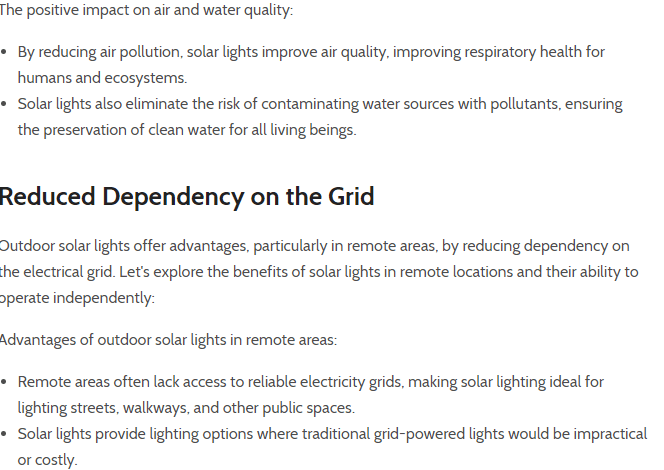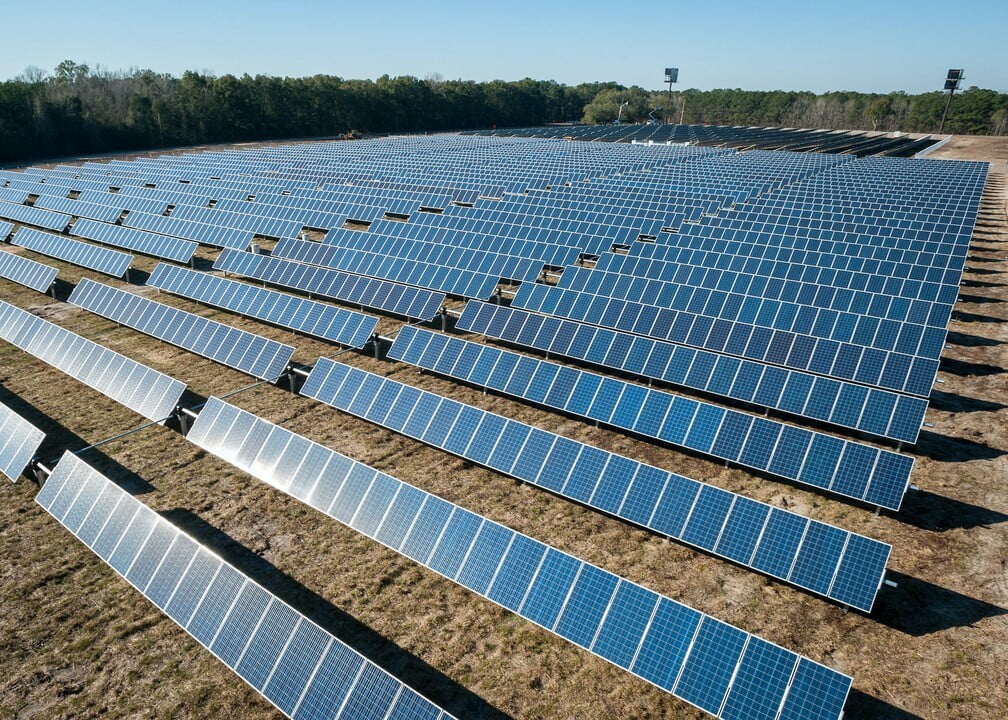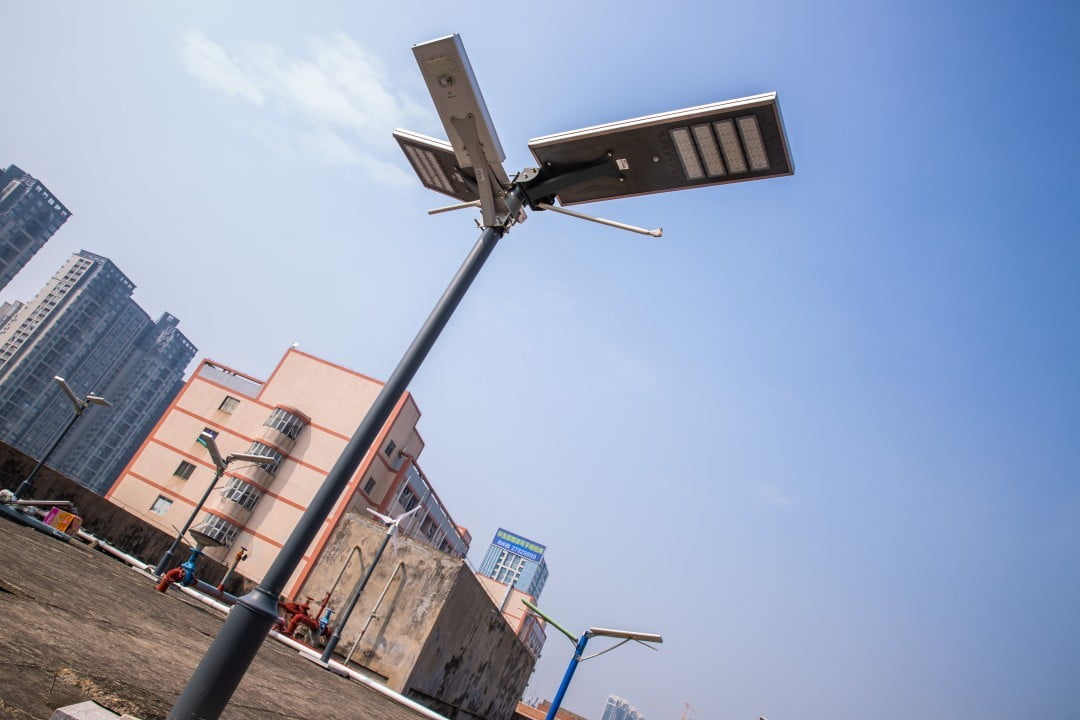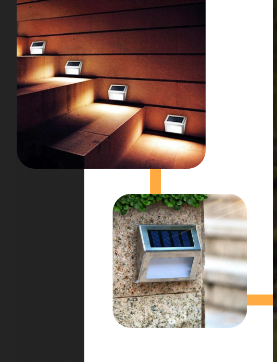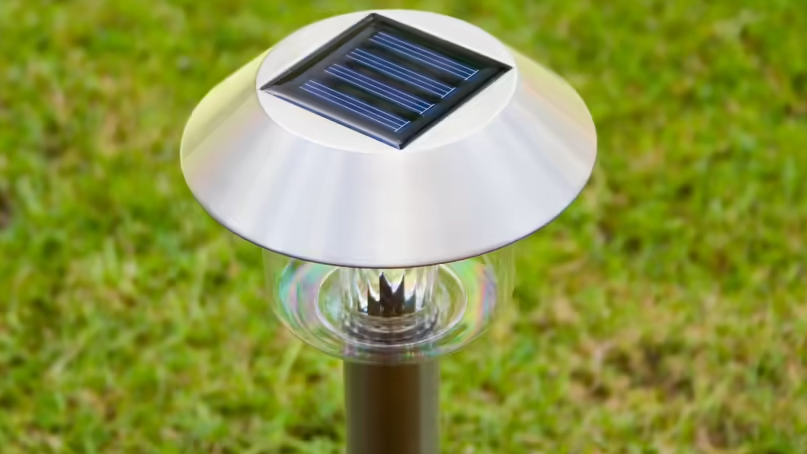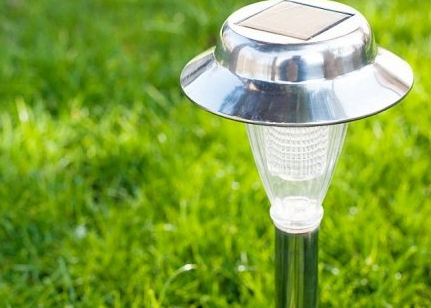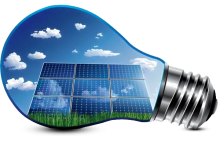Solar lighting is a bit of a modern marvel, there’s a little bit of magic that happens inside of the components of a solar-powered outdoor light. What we don’t realize is that the mundane is actually quite fantastic, and it’s hidden in the inner workings of the solar light as a whole. Here’s how the most important components of a solar light come together to reproduce the light given to us from the Earth’s largest bulb in the sky.
Solar Panel Manufacturing
The manufacturing process with solar lighting starts with silicon. A vast majority of photovoltaic materials are manufactured from silicon because it’s an incredibly abundant resource, making up about 25% of the Earth’s crust by weight. A silicon “seed” is dipped into a large vat of melted silicon and slowly rotated to draw out the purest silicon substance, which eventually hardens into an ingot. From this long cylinder of hardened, pure silicon, extremely thin slices are cut from the ingot and then prepped to have solar cells installed on them. This particular process is extremely slow and somewhat wasteful of silicon since the ingot is often trimmed down–but it produces the most efficient panels on the market. This is what’s called the Czochralski method.
Why are ingots trimmed?
Ingots are trimmed down in such a way to reduce as much silicon waste as possible, but also to shape the wafers so they fit properly onto a solar array small enough to be supported by a solar light pole. Thankfully, the wasted silicon can be re-used into other panels. Typically the excess is added back into the solar cell manufacturing process for poly-crystalline solar cells–a less-efficient solar technology, one that isn’t used for our solar lights. Does it take longer to produce mono-crystalline wafers? Yes. Does it produce more silicon waste? Yes, but that silicon is used in other solar panel products. Is it time-consuming, expensive, and tedious? Yes, but we wouldn’t have it any other way.
Working with LED Lights
LED light fixtures aren’t “one kind fits all.” When it comes to solar powered outdoor lighting, we focus on a lighting brand that delivers in three aspects: light quality, longevity, and energy efficiency. Cree LED lights hit those three aspects with flying colours, so to speak. Here’s the breakdown for each aspect and why these lights are perfect for pairing with a solar panel.
The Quality of Light
An average colour temperature per light fixture we target is 4000K, commonly referred to as neutral white. It’s important to have accurate colour reproduction, especially in public. The ability of a public light to accurately reflect an object’s true colour is referred to as colour rendition, and other light technologies don’t really score well when discussing that topic. LED produces the best colour rendition for subjects illuminated under the fixture. Need convincing?
For comparison, the image listed here is of two vehicles sitting under a high-pressure sodium
(HPS) light. Believe it or not, the vehicle on the left is red, even though they both appear to be black. That’s what bad colour rendition results in; colours that aren’t reproduced accurately. And, honestly, ugly lighting. When searching for your car in a sea of potentially hundreds of others (we’ve forgotten where we parked too, sometimes), it’s nice to perceive the colour of your car as it’s meant to be.
How Solar Lights Convert Sunlight Into Electricity
Solar panels, also known as photovoltaic (PV) cells, are the key component in the conversion of sunlight into electricity. The solar panel is made up of a series of light-sensitive interconnected silicon cells.
When light particles hit the surface of the silicon cells, they cause electrons to dislodge and flow freely. This flow of electrons creates an electric current. Metal contacts on the solar panel then collect the electrons and generate electricity.
Components of Solar Lights
Solar-powered equipment uses several interconnected components. Each of these plays a crucial role in the process of powering the lights.
Solar Panel
As we’ve established, the solar panel collects sunlight and converts it into electricity. The size and capacity of the solar panel will determine how much electricity the device can generate and store.
Rechargeable Battery
The rechargeable battery stores the electricity generated by the solar panel. The battery must be able to store enough electricity to provide lighting for several hours after sunset.
LED Light Bulbs
LED light bulbs are the most common type of bulb used for solar lights. They convert the stored electricity into light and provide bright and efficient lighting.
Outdoor LEDs are also resistant to the elements, as they can withstand exposure to moisture.
Light Sensor
Manufacturers often incorporate light sensors into solar lights. The sensor turns the lights on automatically when it becomes dark and off when it’s bright again.
This helps outdoor lights save their reserve of power.
Types of Solar Lights
Solar lights are available in a variety of styles and designs suitable for different needs and preferences. There are two main categories of solar lights: outdoor lights and indoor lights.
Solar-Powered Outdoor Lights
Solar-powered outdoor lights are best for use in gardens, patios, decks, and walkways. Some popular options include:
– Solar landscape lights: designed to enhance the beauty of your garden and provide soft, ambient lighting
– Solar deck lights: provide bright, focused lighting on decks and patios
– Solar pathway lights: light up walkways, driveways, and pathways
Solar-Powered Indoor Lights
Although most solar lights are for outdoor use, they also have applications indoors.
The big limitation of indoor solar lights is that they generally have to be near windows to build up a charge. In some cases, they can use electric lights to build a charge for use at night.
Some popular options include:
– Solar table lamps: work just like a normal lamp with no need to plug into an outlet
– Solar wall lights: mount onto walls for focused lighting
– Solar ceiling lights: installed in the ceilings of indoor spaces to light entire rooms
Choosing the Best Solar Lighting Options
With so many different types and designs of solar lights available, it can be difficult to know which ones are right for you. There are several key factors to consider when choosing solar for your house.
Location
It’s essential to consider the location of your lights. You should place outdoor lights in areas that receive direct sunlight for most of the day.
Indoors, you should choose lights that suit the size and style of your room and provide the right level of lighting for your needs. You should get an idea of which sides of your home or building get the most sun throughout the day.
Wattage
Wattage refers to the amount of power the light will use to produce light.
Outdoor lights generally require more wattage than indoor lights, as they need to provide bright, focused lighting. Choose a solar light with the right wattage to suit your needs and preferences.
Style
Solar lights are available in a variety of styles and designs, from modern to traditional. Choose a style that suits your tastes and complements the aesthetic of your home and garden.
More powerful lights may require a large solar panel, which can be difficult to conceal. Think about how you’ll incorporate the panel into the design surrounding it.
Battery Capacity
The battery’s capacity is the amount of electricity that can be stored in the rechargeable battery. A higher battery capacity means the light will be able to provide lighting for longer periods of time.
If you plan to use the light for extended periods, choose one with a larger capacity.
LED Quality
The quality of the LED light bulb will impact the brightness and efficiency of the light. Choose a solar light with high-quality LEDs to get the best lighting.
Save Money With Solar Lighting
By understanding how solar lights work, you’ll be able to make an informed decision and enjoy the many benefits of solar lighting. Solar lights can be a convenient money-saving fixture in your home or office.
Consider all the relevant factors when you start shopping for solar lights. Research the functionality as well as the aesthetic elements of each lighting option.
The Environmental Benefits of Solar Lights :
Eco-Friendly and Renewable –
Solar Energy is one of the major energy source which can be utilised by Solar lights to spark up your home and garden. This means that you’ll never run out of supplies, even if you use a lot more appliances or gadgets. Dependence on so many more technologies is frequently inescapable in today’s industrialised world.
One of the most serious environmental issues is the expanding carbon footprint caused by the usage of non-renewable energy sources. However, by employing solar lights, you may dramatically reduce your carbon footprint.
Reduction in Greenhouse Gas Emissions –
Solar lamps provide electricity without harmful greenhouse gases such as carbon dioxide, methane, etc. We can help fight climate change by using solar lamps to reduce our carbon footprint.
Nowadays solar lights are commonly in use in remote areas where extending wires and other electrical infrastructure is costly and difficult hence solar lights provides a sustainable option without any use of fossil fuels for electricity generation and avoid the emission of these greenhouse gases.
Energy efficient –
Solar lamps are very energy efficient as they convert sunlight directly into electricity through photovoltaic cells. Compared to standard grid-controlled lighting systems that can lose power during transmission, this reduces energy consumption. The energy used in solar lighting is clean and has no negative impact on the environment.
Foal independence –
Solar lighting helps reduce the world’s dependence on fossil fuels for electricity production, thereby not only conserving this finite resource but also it also reduces air and water pollution associated with the extraction and combustion of fossil fuels.
Cost-Saving Benefits of Solar Lights:
1. Less Electricity Bills-
Solar lights have zero effect on your monthly electricity consumption because they function independently of the electrical grid, resulting in lower expenses. Furthermore, they require little maintenance and have a long lifespan, which reduces replacement and maintenance costs over time. Solar lights frequently use energy-efficient LED bulbs, which reduces energy.
Solar lights, do not require energy, and provide cost-effective lighting alternatives. This implies that after you install solar lights in your house, you will no longer have to pay hundreds of dollars in electricity costs.
2. Longer Lifespan –
Solar lights are long-lasting and can last for many years, or more. This durability decreases the need for replacements, saving you money on new lights or other components.
You don’t need any future technology advancements once you’ve installed your solar lights. In fact, the cost of the first installation is a long-term solution which will save you a lot in the long term.
3. Power outage Backup –
Weather / Climate changes and local power shortages sometimes cause voltage concerns in the house, but if you have solar garden lights in your garden you can celebrate the twinkling lights eve in your beautiful garden rather than worrying about the extra battery charges/inverter costs and electricity shortage. Alternatively, your grid may fail as a result of a system fault. During these moments, solar lights brighten your home and yard, making it easier for you to depart securely.
4. Safe and Sustainable –
Solar lights are made up of superior quality, they generally last longer. They are also weatherproof and can withstand adverse weather conditions such as rain, snow, and wind. They are composed of plastic which is light and durable. Solar lights do not require to be replaced more frequently which saves a lot of money.
It should come as no surprise that reducing your carbon footprint benefits the environment. Solar garden lights are one of the ways you can start utilizing solar energy to contribute to the environment and your pocket too.
Advantages and Limitations of Solar Lights
Advantages
- Operate on clean, natural energy, with no external electricity used
- Virtually no maintenance required (apart from battery replacement approximately every two years), so in combination with no electricity costs, solar lights operate at zero cost
- Can be very inexpensive to purchase (depending on specifications)
- Year-round operation (performance will depend on specifications)
- Safe for use in rain and snow
Limitations
- Dependent on plentiful direct sunlight (as with all solar energy generation)
- Will not match the performance of the best lights connected to the electricity grid
- Depending on the specifications, may not be able to provide light throughout the full hours of darkness during winter
Typical Uses for Solar Lights
Solar lights can be used in a variety of ways, limited only by imagination and personal preference. Uses broadly fit into two these categories:
- Decorative
- Safety and security
Decorative Solar Lights
Very often, solar lights are used as decorative features in outdoor gardens and around lawns, either on a permanent basis, or for special functions (family gatherings etc.).
Solar Lights for Safety and Security
Most solar lights are used to light pathways, so inherently provide a safety function, even if they are also seen as decorative. In addition, solar lights can be mounted overhead and used to light particular areas for safe nighttime passage. And solar lights are also a viable solution for home and building security lighting.
Other Considerations for Solar Lights
- Number of LEDs
More LEDs does not necessarily mean better. For one thing, the more LEDs in a given solar light, the faster it will consume electricity. A more useful approach is to ‘right size’ solar lights for where they will be used, taking into account the required area of coverage and hours of operation. A knowledgeable solar light reseller can advise, based on specific requirements.
- Solar Lights in Poor Weather
Because solar lights are designed for outdoor use, they are perfectly safe to use in rainy and even snowy conditions.
- Solar Lights Designed for Winter Use
There are premium solar lights that are designed to work in lower daylight conditions. Although more costly than typical solar lights, this winter variety will deliver far superior performance under conditions where days are short, nights are long and sunlight is in lower supply.
- Using Solar Lights in Daytime
In general, solar lights will not operate during daytime, because the light sensor will not activate the LED’s. Even if that were not the case, this would rarely if ever serve a useful purpose – hence this design limitation (if it can be referred to as such).
- Using Solar Lights Indoors
In theory, solar lights can work indoors, as long as they are being charged by sunlight that can reach them during daylight. This assumes, of course, that the room in question does not already have traditional lighting in place that may be a better solution.
- Solar Light Safety
Since solar lights use LED’s, they run at far cooler temperatures than traditional filament lights. Therefore, they are far safer in environments where there are children and pets.

